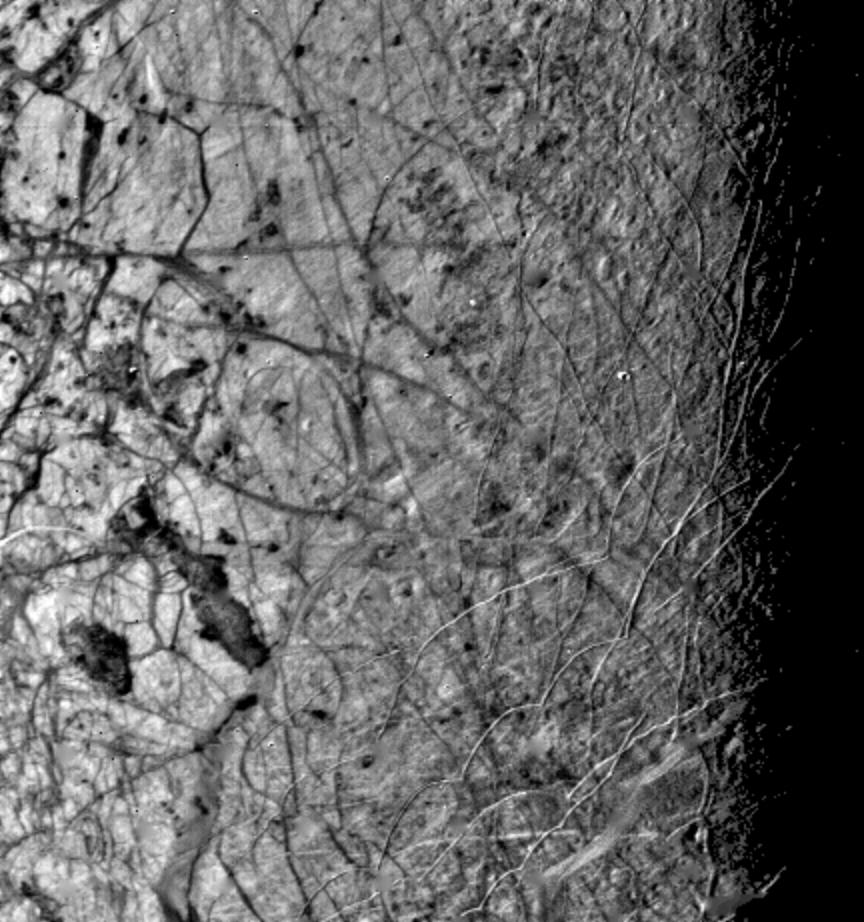All Resources
Europa's Evening Terminator

This image of the Jovian moon Europa was taken by Voyager 2 the spacecraft passed within 139,800 miles (225,000 kilometers) on July 9, 1979. The area shown is about 373 by 497 miles (600 by 800 kilometers) and the smallest features visible are about 2.5 miles (4 kllometers) in size. This image was taken along the evening terminator, which best shows the surface topography of complex narrow ridges, seen as curved bright streaks, 3 to 6 miles (5 to 10 kilometers) wide, and typically 62 miles (100 kilometers) in length. Also visible are dark bands, more diffuse in character, 12 to 25 miles (20 to 40 kilometers) wide and hundreds to thousands of miles or kilometers in length. A few features are suggestive of impact craters but are rare, indicating that the surface thought to be dominantly ice is still active, perhaps warmed by tidal heating like Io. The larger icy satellites, Callisto and Ganymede, are evidently colder with much more rigid crusts and ancient impact craters. The complex intersecting of dark markings and bright ridges suggest that the surface has been fractured and material from beneath has welled up to fill the cracks.


